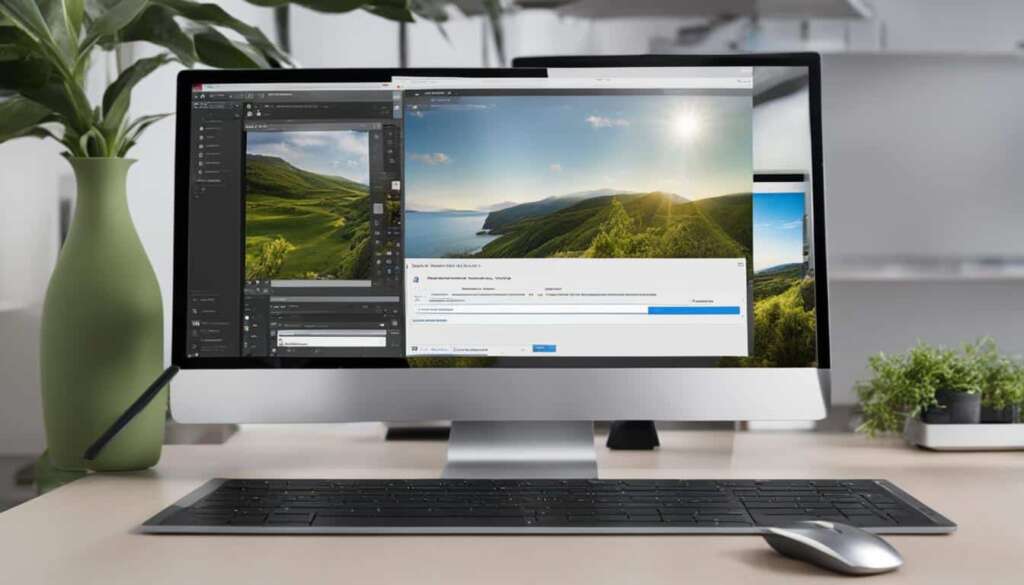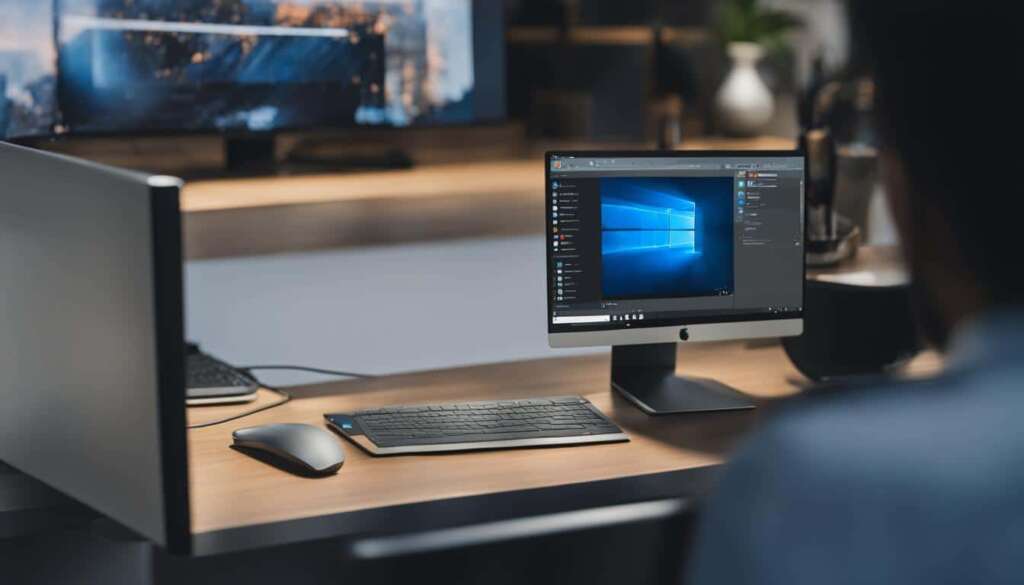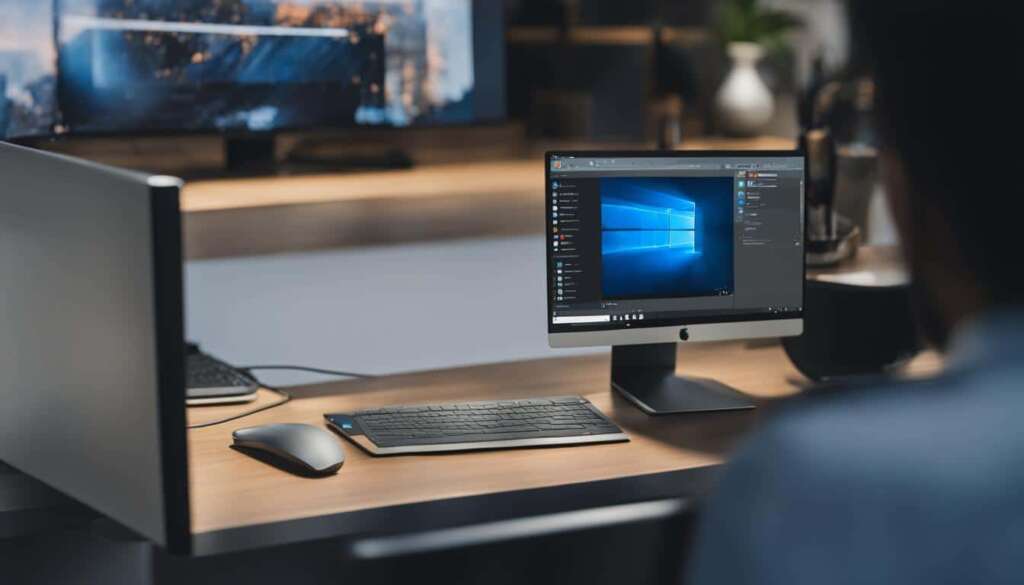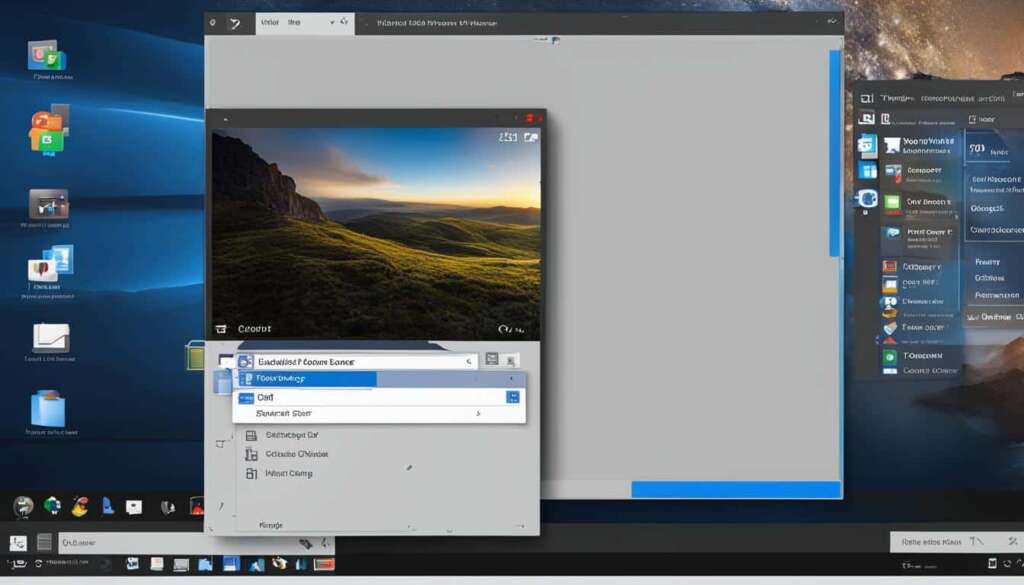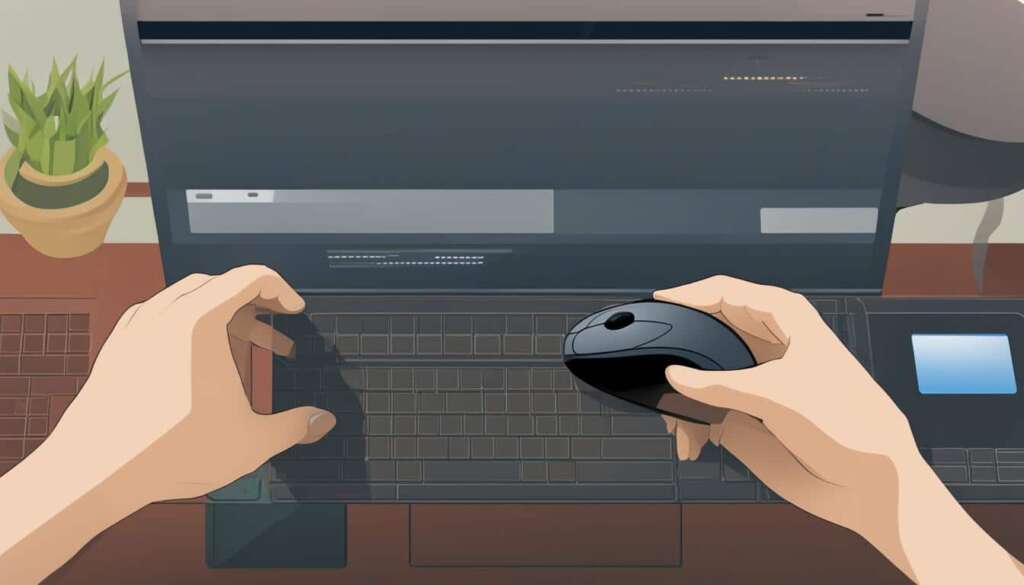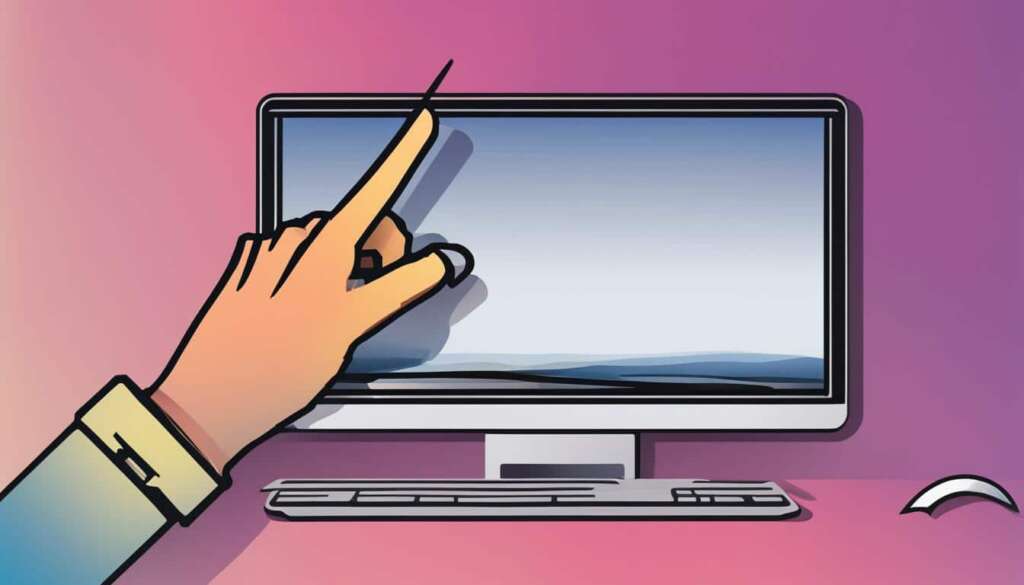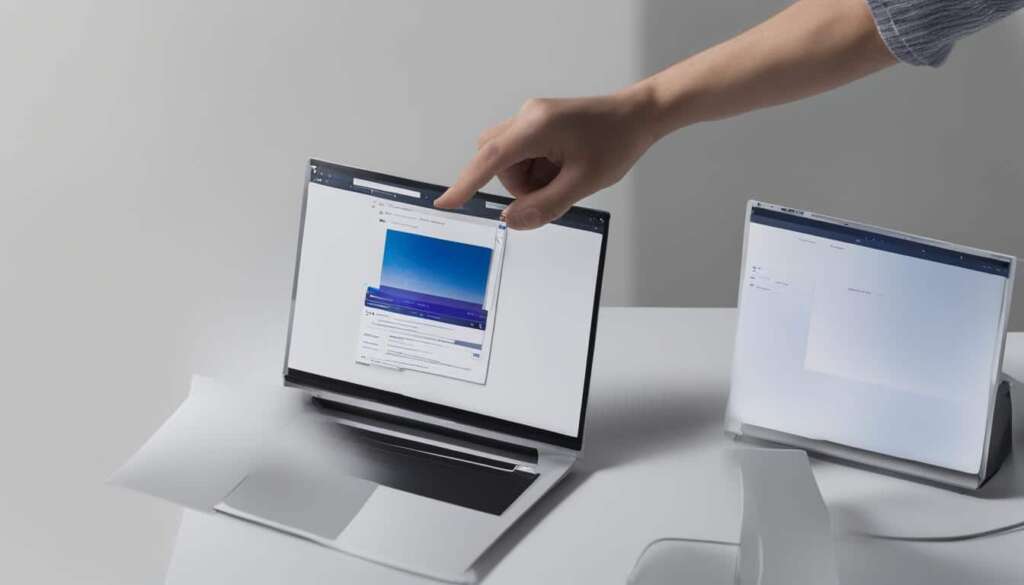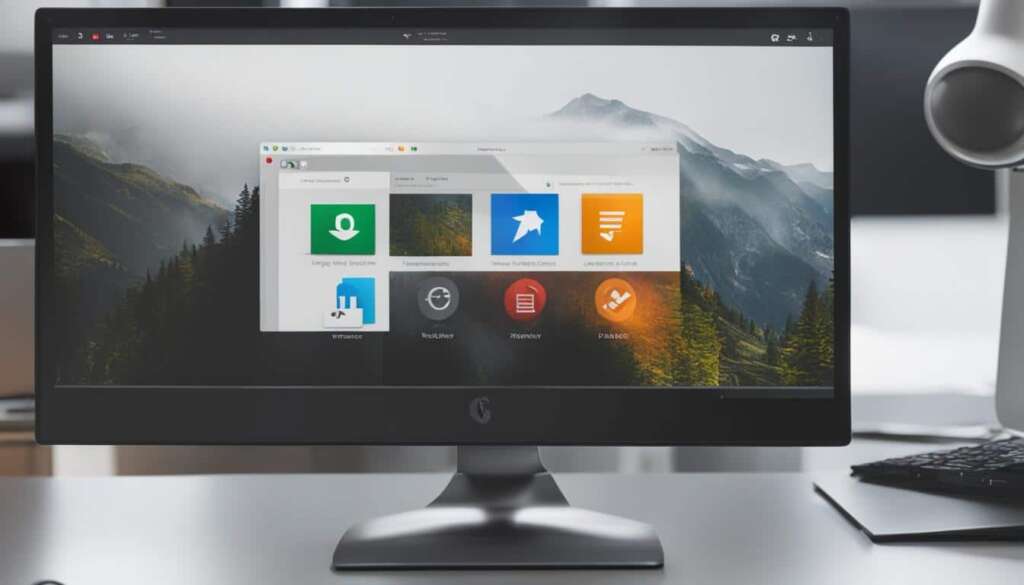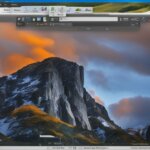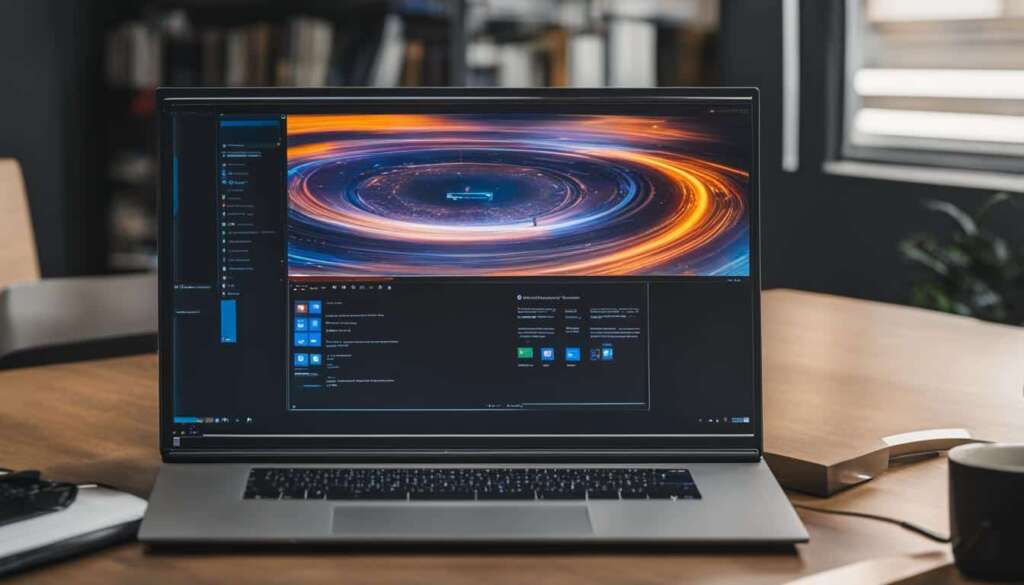Table of Contents
Creating shortcuts on the desktop can streamline your workflow, allowing for quick and hassle-free access to important programs, files, and websites. Whether you’re using Windows 10 or Windows 11, desktop shortcut creation is a simple process that can enhance your productivity.
With just a few easy steps, you can create shortcuts to your most frequently used programs, files, and websites. Gone are the days of searching through menus or folders to find what you need – now, everything is just a click away on your desktop.
By learning how to create a shortcut on your Windows desktop, you’ll be able to navigate your computer with ease and save valuable time. Whether you’re a student, professional, or casual computer user, desktop shortcuts are a game-changer.
In this guide, we will walk you through the step-by-step process of creating shortcuts on your desktop. By the end, you’ll have a clear understanding of how to create a shortcut on your Windows desktop and be well on your way to boosting your productivity.
So, let’s dive in and learn how to create a shortcut on your Windows desktop!
Quick Guide: Create a Desktop Shortcut
Creating a desktop shortcut is a simple process that can save you time and enhance your productivity. Follow this step-by-step shortcut creation guide to create desktop shortcuts for files, programs, and websites.
Creating a Shortcut for Files
To create a shortcut for a file on your desktop:
- Right-click on an empty space on your desktop.
- Select “New” then “Shortcut”.
- Type the name of the file or browse for the file on your computer.
- Click “Next” and then “Finish” to confirm the shortcut creation.
Creating a Shortcut for Programs
To create a shortcut for a program on your desktop:
- Press the Windows key on your keyboard.
- Search for the program you want to create a shortcut for.
- Drag the program symbol onto your desktop.
Creating a Shortcut for Websites
To create a shortcut for a website on your desktop:
- Open the webpage in your browser.
- Click on the lock symbol next to the URL.
- Drag the website shortcut onto your desktop.
By following this desktop shortcut tutorial, you can quickly create shortcuts for your most frequently accessed files, programs, and websites. These shortcuts will provide you with easy access to the resources you need, simplifying your workflow and boosting your efficiency.
What Can You Shortcut to from Your Desktop?
Desktop shortcuts can be created for a variety of purposes. You can create shortcuts for programs you use regularly, files you are currently working with, websites you visit frequently, and even games you are playing. It’s important to structure your shortcuts clearly and not overload your desktop with too many icons.
By creating shortcuts to your go-to programs, you can launch them with just a click, saving time and effort. Whether it’s your favorite word processor for document editing, design software for graphic creation, or accounting tool for financial management, desktop shortcuts provide quick and convenient access to the tools you rely on to get your work done efficiently.
Similarly, you can create shortcuts to files that you frequently need to access. Whether it’s project documents, spreadsheets, presentations, or media files, having them conveniently located on your desktop can streamline your workflow and eliminate the need to navigate through multiple folders.
Do you have a favorite website that you visit daily or multiple times a day? Instead of typing the URL or searching through your bookmarks, create a desktop shortcut to that website for instant access. Whether it’s a news website, social media platform, or online shopping portal, having the shortcut right on your desktop ensures you never miss out on important updates or deals.
And for all the gamers out there, desktop shortcuts can also be created for your favorite games. Whether it’s a multiplayer online battle arena (MOBA), first-person shooter (FPS), or role-playing game (RPG), having a shortcut on your desktop makes launching the game a breeze. So get ready to jump into your virtual adventures with a simple click.
Remember, it’s important to keep your desktop organized and avoid clutter. While shortcuts can be helpful, having too many icons can make it difficult to find what you need. Consider creating folders to categorize your shortcuts or periodically review and delete shortcuts that you no longer use.
Stay organized, stay productive, and let desktop shortcuts be your guide to a more efficient workflow.
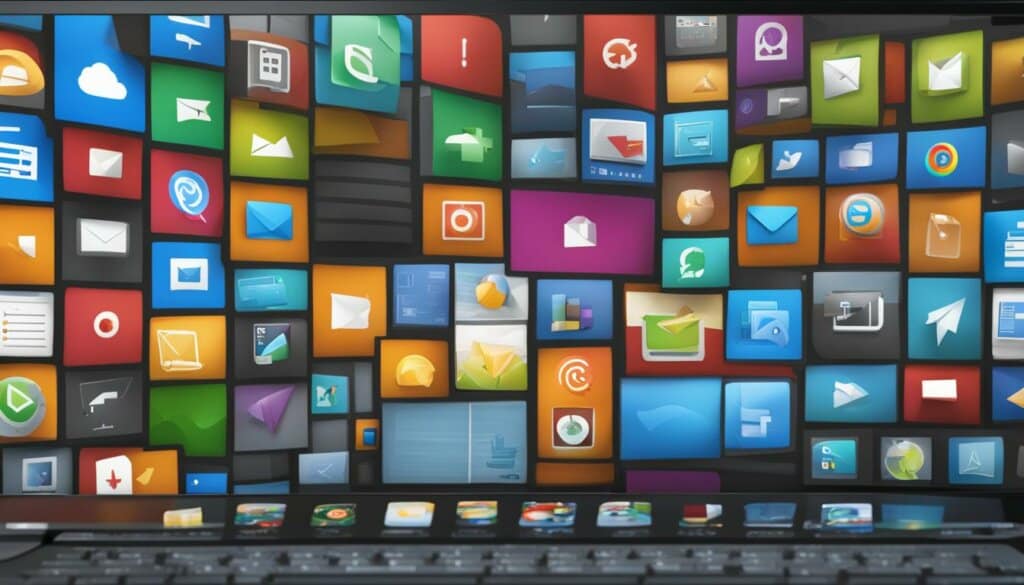
Windows 10 and Windows 11: Create Shortcuts
The process of creating shortcuts on the desktop is the same for both Windows 10 and Windows 11. By following these simple steps, you can quickly create shortcuts for files, programs, and websites.
Create Shortcuts for Files
To create a shortcut for a file on your desktop:
- Right-click on an empty space on the desktop.
- Select “New” and then “Shortcut”.
- Enter the file location or browse for it using the file explorer.
- Give the shortcut a name and click “Finish”.
Create Shortcuts for Programs
Creating a shortcut for a program is just as straightforward:
- Press the Windows key on your keyboard.
- Type the name of the program you want to create a shortcut for.
- Drag the program onto the desktop.
Create Shortcuts for Websites
If you want quick access to your favorite websites, you can create shortcuts on your desktop:
- Open the webpage in your preferred browser.
- Click on the lock symbol next to the URL.
- Drag the website shortcut onto your desktop.
Creating shortcuts on your desktop enhances your productivity and makes accessing your files, programs, and websites more convenient. With these simple steps, you can customize your desktop with shortcuts that suit your needs.
How to Create a Shortcut to an Application
Creating a shortcut to an application on your desktop can save you time and make it easier to access your favorite programs. There are two methods you can use to create a desktop shortcut for an application.
Method 1: Drag and Drop
To create a shortcut using the drag and drop method, follow these steps:
- Open the Start menu and search for the application you want to create a shortcut for.
- Click and hold the application icon and drag it onto the desktop.
Once you release the mouse button, a shortcut to the application will be created on your desktop, allowing you to open it with a single click.
Method 2: Right-Click Menu
If you prefer using the right-click menu, here’s how you can create a shortcut:
- Open the Start menu and search for the application.
- Right-click on the application and select “Create Shortcut”.
A shortcut to the application will be created on your desktop, providing convenient access whenever you need it.
By creating shortcuts to your frequently used applications, you can declutter your desktop and streamline your workflow. Now you can launch your favorite programs with ease!
How to Create a Shortcut to a File or Folder
Creating a desktop shortcut to a file or folder can save you time and make it easier to access your important documents or directories. With just a few simple steps, you can create a shortcut to a file or folder without having to move it from its original location.
To get started, follow these simple instructions:
Step 1: Locate the File or Folder in File Explorer
To create a shortcut to a file or folder, you first need to locate it in File Explorer. Open File Explorer by clicking on the folder icon in the taskbar or pressing the Windows key + E on your keyboard. Browse through your files and folders until you find the one you want to create a shortcut for.
Step 2: Hold Down the Alt Key
Once you’ve found the file or folder you want to create a shortcut for, hold down the Alt key on your keyboard. This will allow you to drag and drop the file or folder onto your desktop without moving it from its current location.
Step 3: Drag and Drop the File or Folder onto the Desktop
With the Alt key pressed, click and drag the file or folder from File Explorer onto your desktop. When you release the mouse button, a shortcut to the file or folder will be created on your desktop.
That’s it! You have successfully created a shortcut to a file or folder on your desktop. You can now easily access the file or folder by double-clicking on the shortcut.
Creating shortcuts to files or folders can help you stay organized and improve your productivity. Whether you need quick access to important documents, frequently visited folders, or frequently updated files, creating desktop shortcuts can simplify your workflow.
| Benefits of Creating Shortcuts to Files and Folders |
|---|
| Easily access frequently used files or folders |
| Streamline your workflow |
| Save time searching for files or folders |
| Organize your desktop and files efficiently |
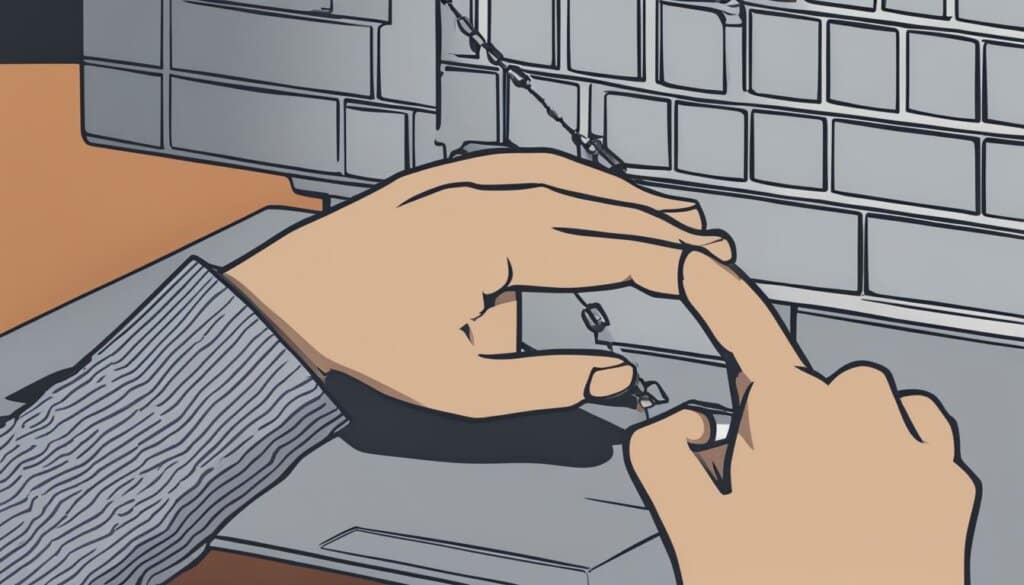
By following these simple steps, you can create shortcuts to files and folders on your desktop, making it easier to find and access your important documents. So go ahead and start organizing your desktop with shortcuts today!
How to Create a Shortcut to a Website
In Google Chrome, Microsoft Edge, or Mozilla Firefox, you can easily create desktop shortcuts to websites. Simply open the webpage, click on the lock symbol next to the URL, and drag it onto the desktop. This will create a shortcut that opens the website in your default browser.
Conclusion
Creating shortcuts on the desktop can be a powerful tool for increasing productivity and streamlining your workflow. By utilizing desktop shortcuts, you can access your most frequently used programs, files, and websites with just a click. Whether you’re a Windows 10 or Windows 11 user, the process of creating desktop shortcuts is straightforward and effortless.
Follow our step-by-step guide to easily create shortcuts on your desktop. With a few simple clicks, you can save valuable time and improve your everyday tasks. Say goodbye to searching through menus or folders and say hello to a more efficient and organized desktop.
So why wait? Start enhancing your productivity today by creating shortcuts on your desktop. Incorporating this simple technique into your workflow will help you work smarter, not harder. Streamline your access to essential resources and enjoy the benefits of a more efficient digital environment. Try it out and experience the difference it can make!
FAQ
How do I create a shortcut on my desktop?
To create a shortcut on your desktop, you can right-click on an empty space, go to “New” and then “Shortcut”, type the name or search for the file, and confirm the shortcut.
Can I create shortcuts for programs on my desktop?
Yes, you can create shortcuts for programs by pressing the Windows key, searching for the program, and dragging it onto the desktop.
What can I shortcut to from my desktop?
You can create shortcuts for programs, files, websites, and even games on your desktop.
Can I create shortcuts on both Windows 10 and Windows 11?
Yes, the process of creating shortcuts on the desktop is the same for both Windows 10 and Windows 11.
How do I create a shortcut to an application?
To create a shortcut to an application, you can open the Start menu, find the application in the Apps list, and drag it onto the desktop.
How do I create a shortcut to a file or folder?
To create a shortcut to a file or folder, you can locate the file or folder in File Explorer, hold down the Alt key, and drag and drop it onto the desktop.
Can I create a shortcut to a website?
Yes, in Google Chrome, Microsoft Edge, or Mozilla Firefox, you can create desktop shortcuts to websites by opening the webpage, clicking on the lock symbol next to the URL, and dragging it onto the desktop.
Why should I create shortcuts on my desktop?
Creating shortcuts on your desktop can increase productivity and make tasks more efficient by providing quick and easy access to important programs, files, and websites.

